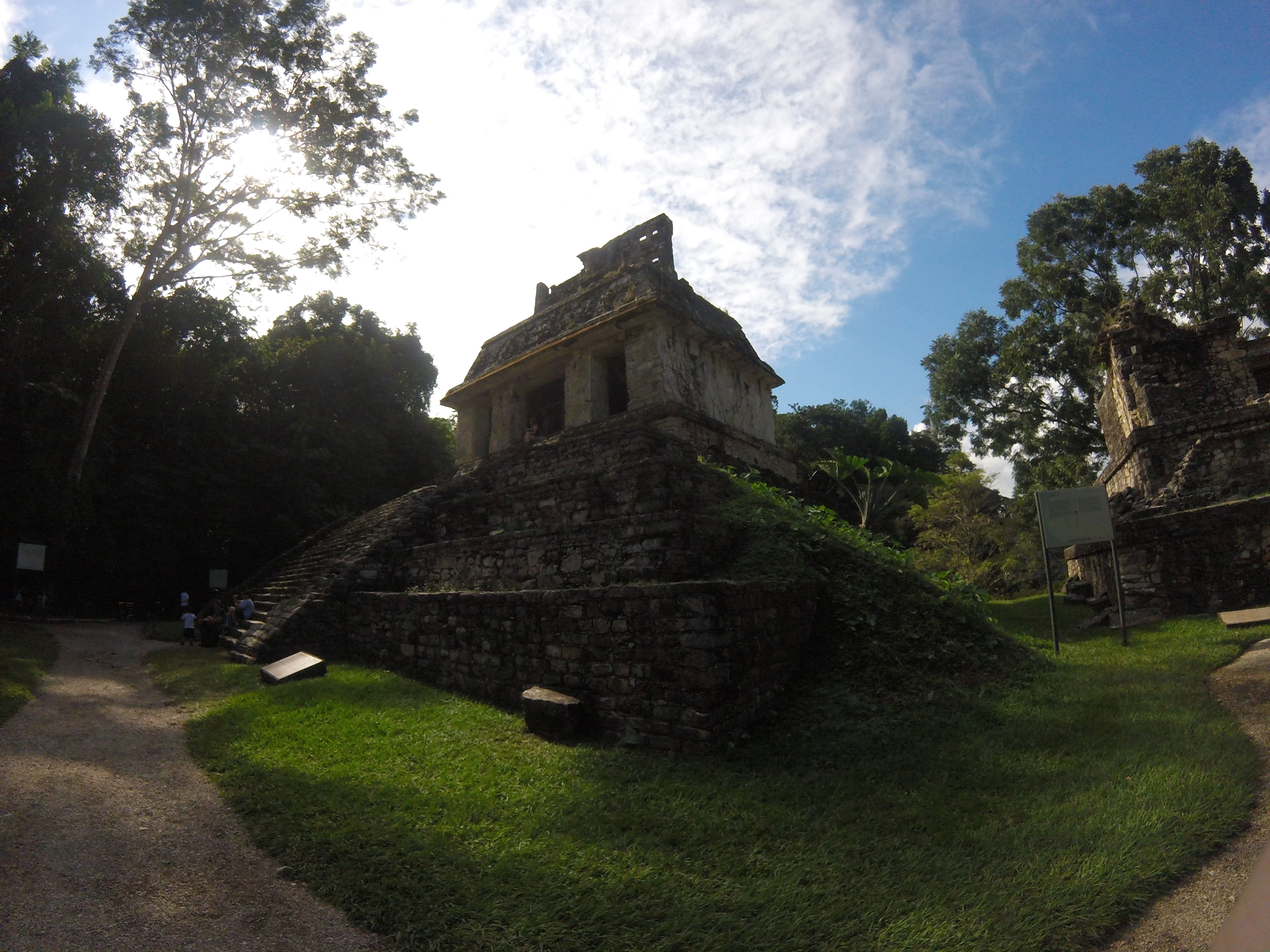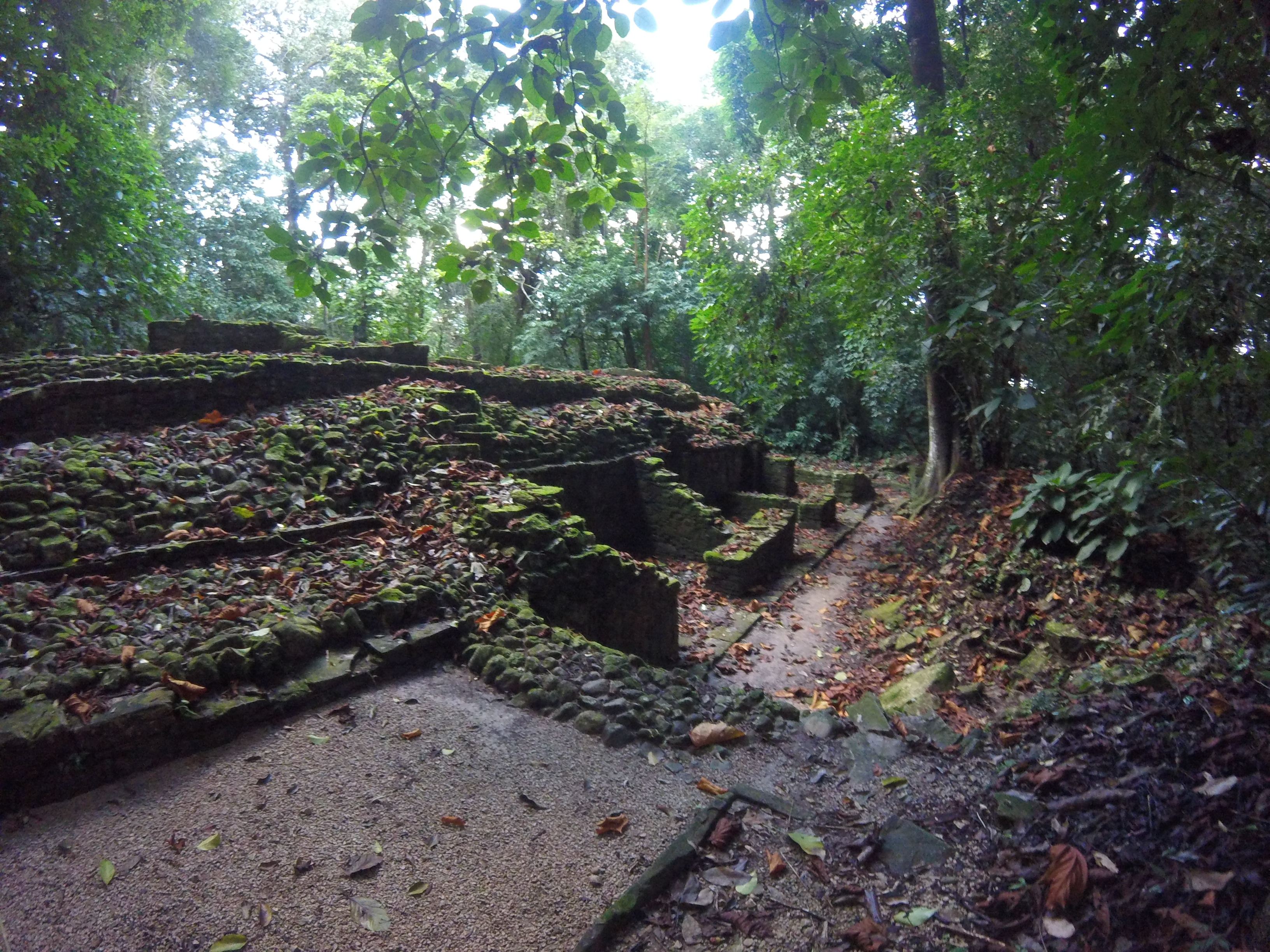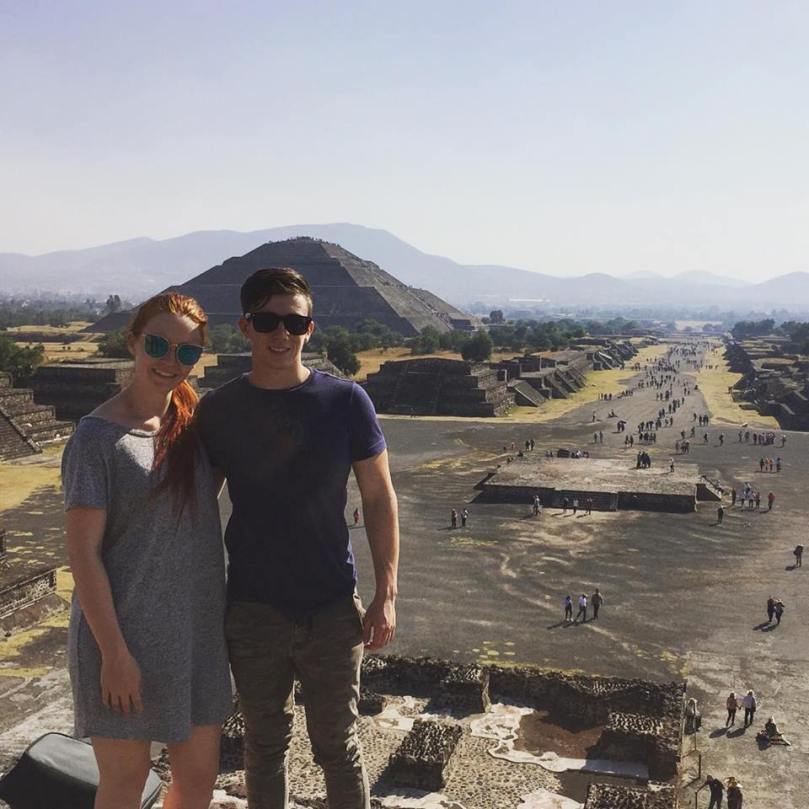Valladolid! Now there are two things we wanted to do in Valladolid the first was obviously visit Chichen Itza, and the second was visit a cenote (see-note-tay). We had one day to achieve this and thankfully we did with ease. It would’ve been nice to visit some more cenotes and do some of the other things there was to do in Valladolid but oh well. We spent our extra day in Merida and now we had to make up for it.

So Valladolid, it was a quick one hour bus ride there which was breezy. When we got there we checked into our hostel which for some reason came with two double beds though I’m pretty sure we booked for two not four but eh, our bags now has their own bed to sit on. After getting ourselves sorted we ventured out to find some lunch and see a bit of Valladolid. The zoca square we lovely, we found a place to eat straight up and just sat down and ordered ourselves some well deserved tacos. There were also so many stray dogs for us to pat and scratch and sneakily feed under the table before the poor restaurant staff would try and shoo them away for the thousandth time.
We’d met some New Zealand girls on a tour in Oaxaca who said that they’d bought dog food and had been feeding it to all the dogs. When I mentioned we should do something similar Callum thought it was a great idea and was amazed that we hadn’t thought of it before (clearly he hadn’t been listening when the New Zealand girls mentioned the idea). So after lunch we traipsed around the tourist trap shops that seem to encircle the square in search of dog food. We sound some dog biscuits being sold in a dollar store and bought ourselves a bag. We then set out to find the doggo’s we’d been petting.

We probably fed about four or five, some in better shape then others. What’s really surprisingly lovely about Mexico is beyond the odd snappy dog all the stray dogs have been so gentle. Which is so different from visiting other places where the stray dogs are just mean and you don’t pet them unless you want to loose some fingers. But the majority we’ve met have been happy doggos down on their luck.
We spent the rest of the day feeding dogs, going back to the room to have a small rest, and then venturing out in the evening to look for dinner (couldn’t really find anywhere inspiring to eat so we ended up back in the same restaurant). And thus ended our first half a day in Valladolid.
The next morning we woke up with a mission: find a laundromat and get out clothes cleaned. We used one in San Cristobal and whilst we did bring stuff to do it ourselves these places charged by the kilo, and not much, and we just had to drop it off and pick it up, easy. Finding one though wasn’t so easy as we ended up traipsing around what felt like half the city looking for one. We did find though a health food store where we bought some snacks to get us through the day, and a chocolate store selling homemade chocolates and cold chocolate drinks. We’d progressed from hot chocolate to cold chocolate, which was delicious as the day was toasty. We also found a restaurant where we planned to have dinner that night.
After the laundromat we made our way to the bus station, all thankfully a few blocks from each other. I’d googled it the night before and there were collectivos that would bring us to Chichen Itza apparently parked out behind the bus station. We almost at the bus station when we found them, or rather they found us. You can’t really miss the collectivos as they’re trying to fill up the cars as quickly as possible before they leave so someone will come up and ask you where you’re headed. Then they’ll either bundle you in or direct you in the direction of the one you’re looking for. So into the collectivo we went. It was full of locals and two other tourists who would’ve looked more at home at Burning Man rather then a collectivo in Mexico. Turns out they were from Australia and the couple was very nice but more on them later.


So it was a 30/40 minute ride to Chichen Itza online it had said the collectivo would only cost $35 pesos but the guy wanted to charge us $70 per person. Unfortunately for him he didn’t have change for a $500 and we only had $70 on us in smaller notes. Not $140 so he took the $70 and called us even. So there’s an unintentional tip if you’re traveling, pretend (or do as we did) to only have the amount you want to pay and only have big notes otherwise. To be honest it’ll probably work most of the time as despite their inflated currency no one really seems to have change. Almost every place we’ve been when we’ve paid with big notes for small-ish purchases people have had to run down the street to other shops to get change. So boom, not a Traveling Tip Learnt the Hard Way, but a Traveling Tip Learnt Unintentionally.
Since I’m full of advice today here’s another tip if you’re bringing in a camera to Chichen Itza (say my innocent and beloved go pro) put it in a bag (say Callums backpack) otherwise they will charge you $45pesos on top of the $215 entrance fee for the pleasure of bringing in your own camera to take photos with. I’m still very mad about that.
Now Chichen Itza recently named a wonder of the world and to be honest I’m kind of curious as to why. We didn’t have a guide for this so maybe it’s in the history of the place but Teotihuacan was far more impressive and the Palenque ruins is far bigger (only 2% uncovered!). Maybe I’m being biased though as I was disappointed that we couldn’t walk on/around Chichen Itza like we could everywhere else. The stand out ruin though was the ball court (no good photos I’m afraid as there was a huge blob of touring tourists standing in the middle the whole time we were there). I’m so curious as to how they played the game (and did you know, as we learnt from our guide in the Palenque ruins, the winner was the one who got sacrificed?). As far as I’m aware it was teams of 5 and you could only use your elbows and hips. I bet it would be an intense game to watch, probably much better to watch in person then say a basketball game with ridiculous sound effects (if that reference went over your head, where have you been? Go check out the posts from LA).
Chichen Itza was also full of people trying to sell their stuff. Or whoever’s stuff it was as one stall was much the same as the next. The favourite catch phrase seemed to be “almost free” or “one dollar”. The currency here in the Peninsula seemed to cater to American Tourists as a lot of places seemed to take pesos or USD. Which was sort of annoying as we had the pesos to AUS dollar down, we didn’t really need another currency thrown in there. Surely the Americans will survive some currency calculation.
We got lost in Chichen Itza amongst the crisscrossed paths that led to the odd ruin. Paths that were filled with eagle eyed boisterous hawkers. It was a little exhausting being battered by voices and merchandise from all sides. We eventually found our way out through and decided it was time to try and make it to the cenote the collectivo passed on the way in. We weren’t sure where the collectivos picked up from so we ended up asking a taxi their price and then splitting the trip with two other people who wanted to go to the same place. Two people who were none other then the Burning Man couple from the bus. That’s how we know they’re Australian, and planning to keep traveling to many more months.


The cenote was called Ik Kil and it was awesome. I’m sure there are others that are less touristy, or not as busy, but it was close to Chichen Itza and a cool experience regardless. We got there around 3, it closed at 5:30 and started clearing out around 3:30/4. The cenote itself was deep in the ground, had to climb down many a slippery step to get to it. The water was also 50m deep (so don’t drop the GoPro) and full of catfish. Callum did spend a good half an hour trying to catch a catfish (he almost managed to catch one of the baby ones, almost). There was rope in the water that you could cling to when you got tired which was ingenious otherwise the whole thing would’ve been exhausting. There are also very modern lockers, bathrooms, change rooms, and showers you can use. Far more touristy it felt then our waterfalls in Palenque but what can you do.


After that we devoured our snacks, caught the last bus at 5 back to Valladolid (and who was also waiting for said bus but our Australian taxi companions), and went our to dinner near the laundromat.
We ended the evening with another round of stray dog feeding – one of the dogs even remembered Callum and literally bounced around him whilst he got the dog food ready to put down. It was adorable and well worth the minimal cost of the dog food.
Then it bucketed down with rain and we had to make a dash for the hostel. And so ended our first and last full day in Valladolid. We achieved everything we wanted to and slept soundly in a nice bed after a warm shower. Unfortunately one of our last warm showers on our Mexico adventure, but we didn’t know that yet.
All For Now
Rachel Connolly














